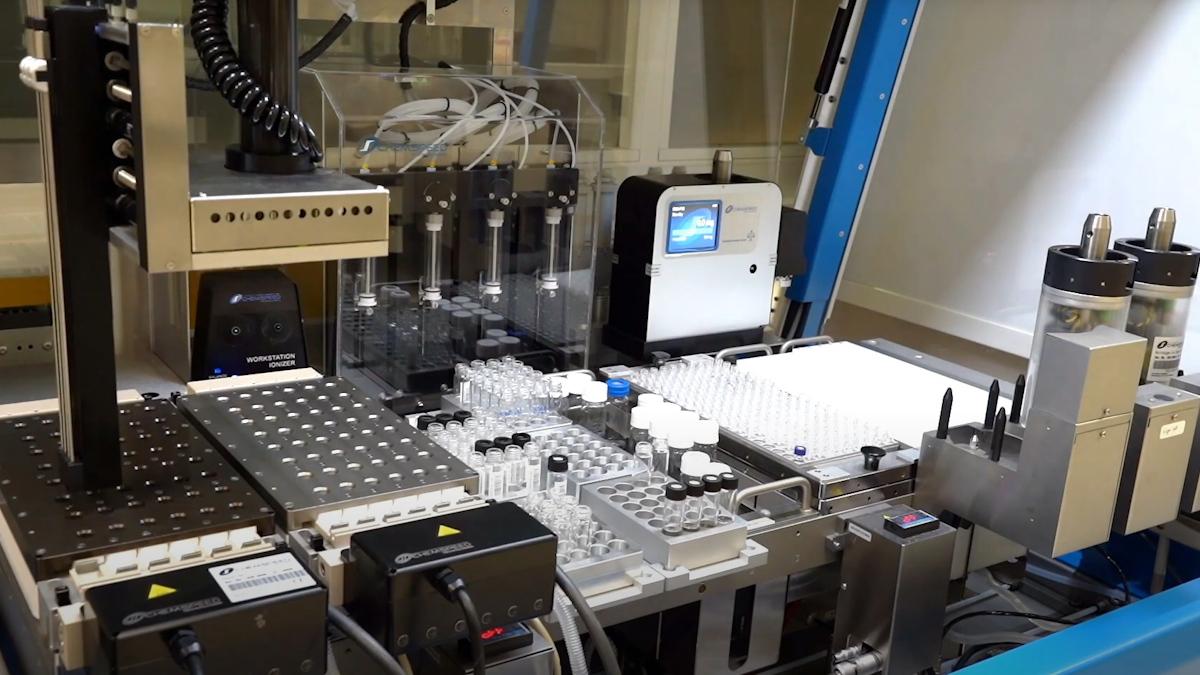How modular content provides ‘light-speed’ review and boosts engagement

Twenty-first century communications are fast, personalised and multi-channel – all of which can seem diametrically opposed to the heavily-regulated world of the pharmaceutical industry.
But an innovative, modular approach to content creation can facilitate rapid updates and enhance customer engagement across channels.
The COVID-19 pandemic has hugely altered healthcare professionals’ (HCP) behaviour. They are seeing half as many patients as they did before the virus hit and, inevitably, the number of face-to-face promotional and e-meetings with pharmaceutical sales representatives is declining.
However, more HCPs now say they are open to consuming pharma information, highlighting the need to produce the right kinds of content for use across the digital touchpoints that prove to be effective.
pharmaphorum's How to Win With a Multichannel Approach: Customer Engagement Journey, Modular Content and IT Ecosystem webinar, in association with Viseven, looked at starting multichannel campaigns, how to use modular content as part of the multichannel marketing strategy, and how to design and execute customer engagement journeys.
Time for change
Traditionally, pharma marketing, based on face-to-face contacts between HCPs and sales reps and static campaigns, has been slow and costly to design and implement.
Birgitte Dreyer, Novo Nordisk
Modern marketing requires a much more agile approach than the industry is used to. We all expect fast access to personalised information across multiple channels, and HCPs are no exception.
Birgitte Dreyer, a senior multichannel manager at Novo Nordisk, told the webinar audience: “I think we are still quite immature in pharma. We still very much focus on the smaller, day-to-day customer journeys, but we no longer focus on display marketing.
“We really need to put the customer at the centre of what we do and be relevant with the engagements that we have in mind.”
To do that, she went on, organisations must focus on efficient planning across channels and touchpoints, while remembering that all activity must be led by the sales force.
“When we work with customer journeys, one of the most important elements is the field force. Let them be the orchestra in what we are doing, because they have the relationships,” she said.
The modular approach
The rapidly evolving COVID-19 situation has seen research and best practice updated on an almost daily basis, demonstrating just how important it is to give HCPs rapid access to trusted information that suits their needs.
Though while the current crisis may have crystallised the message, this digital transformation has been the direction of travel for some time.
To work effectively, social media and email-driven marketing and communication requires huge quantities of channel-specific content.
“When we embarked on this multichannel journey in Novo Nordisk, it was really important for us to be able to keep up with all the content that needed to be produced,” she said.
“We did some calculations and figured out that we needed to produce three times as much content.”
Applying content modules in pharma
So, how can pharma, one of the most heavily regulated sectors on the planet, hope to keep up? With innovative methods such as the content module approach, said the webinar panel.
Oksana Matviienko, key account manager at Viseven, explained: “A module is a claim with supporting text, media, and references that are approved to be used together. It can be as small as an email block or as big as an interactive visual aid slide.”
The main thing, she said, is that it has a meaning.
“It is system and channel-agnostic, so is not specifically created for any CRM or any channel, and is open for re-use across countries, systems, and channels,” said Oksana.
“It is connected, so that you can track what assets are used in the module and what modules are re-used in the final composite piece. It is approved standalone, outside of the final content.”
The benefits are three-fold. First, it facilitates light-speed MLR review, allowing internal and external marketeers to simply ‘drag and drop’ pre-approved modules into channel-specific templates.
The process, which Birgitte and Oksana likened to “building with Lego blocks”, is cost-effective, as it eliminates the need for multiple design and approval pathways.
Crucially, the modules are trackable, meaning results and engagement can be measured, and performance enhanced over time.
Harnessing data, building customer journeys
The pharmaceutical industry needs to take the same evidence-based approach to marketing and customer engagement that it does to developing medicines.
To this end, Novo Nordisk has built a content ecosystem that includes a library of pre-approved modules, called Content Hub. Not only does it provide easy access to content, it also enables tracking and analytics.
Said Birgitte: “The main focus is to remove all the time-consuming work related to the production, approval and sharing of content. That’s important when you want to be better at re-using content across affiliates. It also provides deeper insights. By looking into the library, we can get an idea about which content works.”
There’s no such thing as ‘one size fits all’ marketing anymore, and consistent tagging and testing are key to delivering the insights on customer preferences that inform local execution of campaigns, she went on.
“Personalisation is important. HCPs want us to recognise who they are, remember what they want to receive, and know their interests, and they want to be in control of how and when they interact with our brand,” she said.
Modular content and analytics can help pharma supply that by providing the tools to intelligently segment audiences, tailor messaging, optimise send-times, and much more – all of which leads to higher conversion rates.
“With Content Hub, we can speed up the design, coding, and testing of content. This increases our overall efficiency, leading to shorter turnaround times and faster time to market,” said Birgitte.
Understandably, pharma has been slow to adopt to the instant world of digital communications. But multichannel marketing and customer engagement is here to stay, and the industry has no choice but to adapt.
The pressure is on pharmaceutical companies to stay relevant, continually refine their engagements and use of marketing channels and, ultimately, build up customer loyalty over time.
Taking a modular content approach can help, by saving resources and providing light-speed MLR response, allowing teams to push out rapid updates and measure their impact across channels.
Watch the How to Win With a Multichannel Approach: Customer Engagement Journey, Modular Content and IT Ecosystem webinar in full












